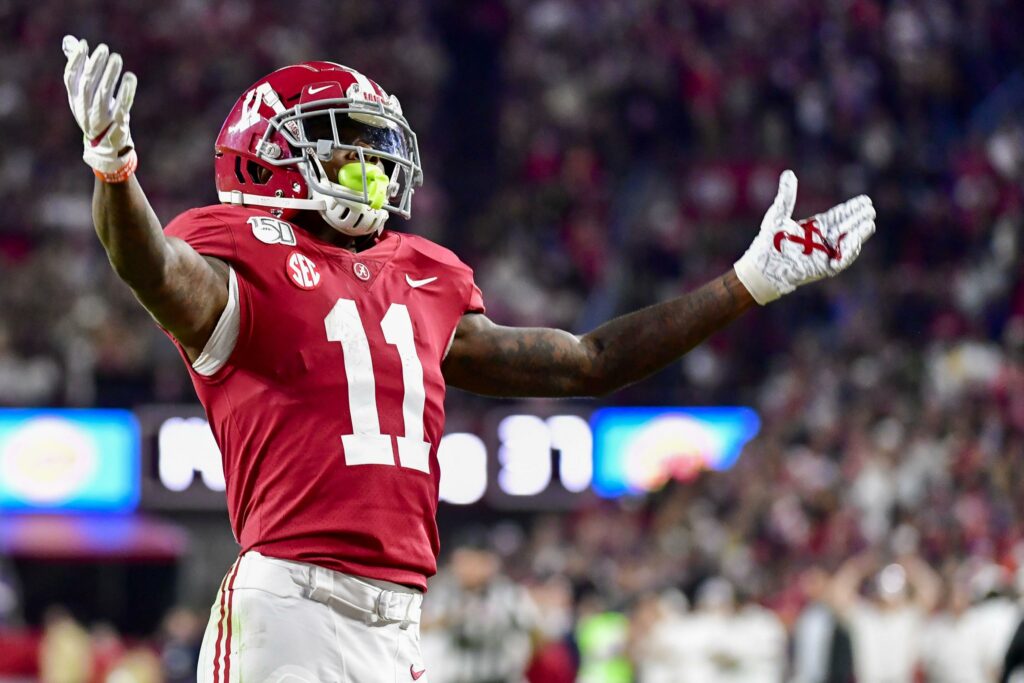On paper, the Las Vegas Raiders spent six of their seven draft picks on wide receivers and defensive backs. A closer look at those selections shows a pattern of getting players who can fill multiple roles. This will give the coaching staff the flexibility to be more creative on both sides of the ball.
How Did the Offense Change?
When the Raiders took three wide receivers in the first three rounds of the draft, people were understandably baffled. However, it may be more accurate to say that Las Vegas got three offensive weapons. Their first pick of the draft, Alabama wide receiver Henry Ruggs III, can attack opposing defenses in a multitude of ways. He can line up outside and burn people deep, catch and run from the slot, or even be a running threat on end-arounds. In the third round, the Raiders selected two more receivers, Lynn Bowden Jr. out of Kentucky and Bryan Edwards from South Carolina. Bowden is more of a swiss army knife than a wide receiver. While he started out at Kentucky as a talented pass-catcher, he finished his collge career as a dangerous dual-threat quarterback. The coaching staff will likely deploy him primarily as a running back at first, but he has the potential to be the next Taysom Hill. Edwards’ tape of his time at South Carolina shows a guy who can be effective from all three wide receiver positions. This is a trait that head coach John Gruden is known to covet in his receivers.
Related: Damon Arnette Is The Steal of the Draft
Defensive Additions
On the defensive side of the ball, the Raiders invested heavily in the secondary, but they got a lot more than just two corners and a safety. With their second pick in the first round, they got cornerback Damon Arnette out of Ohio State, who had experience in college playing as an outside corner and as a nickel. He will likely do both in the NFL. The last of Las Vegas’ three third-round picks, Tanner Muse out of Clemson, might be one of the draft’s most versatile defenders. While listed as a safety, he can also play linebacker. With the Tigers, he and his teammate, top ten draft pick Isaiah Simmons, would often swap roles. One would drop into coverage while the other played up in the box and vice versa. In Muse, the Raiders got a reliable coverage linebacker who is also a sure tackler. Las Vegas then spent their last pick in the draft on another corner, Amik Robertson out of Louisiana Tech. Robertson projects as a zone guy who can play man in nickel sets, but he has a lot of experience as an outside cover corner. Also, Robertson’s ball tracking skills suggest he could make a solid free safety. Defensive coordinator Paul Guenther likes to be creative with his defenses and disguise his schemes. He now has more personnel to do that.
Both Gruden and Guenther are known for using versatile players to give opponents multiple looks with the same personnel. However, we have yet to really see that over the last two years. That could be attributed to lacking the proper personnel. After this draft, that excuse will be a lot harder to justify.
You May Also Like: Did The Raiders Follow The Perfect Draft Strategy?
[pickup_prop id=”19835″]


Good article!!
I think this draft will prove to be even better than last years hit. People are sleeping on our later round picks.
Prove